10 /10 1 Votes10
4.9/5 Emuparadise Designer(s) Masaya Hashimoto Writer(s) Tomoyoshi Miyazaki Initial release date 21 June 1987 Genre Action role-playing game | 5/5 My Abandonware Director(s) Masaya Hashimoto Programmer(s) Masaya Hashimoto Mode(s) Single player Series Ys | |||||||||||||||||||||||||||||||||
 | ||||||||||||||||||||||||||||||||||
Composer(s) Yuzo KoshiroMieko Ishikawa Similar Ys games, Nihon Falcom games, Action role-playing games | ||||||||||||||||||||||||||||||||||
Ys i ancient ys vanished pc dos 1989 gameplay
Ys I: Ancient Ys Vanished (イース Ancient Ys Vanished, Īsu) (also Ys: The Vanished Omens or The Ancient Land of Ys) is the first installment of Ys, an action role-playing video game series developed by Falcom in 1987. The name is commonly misspelled Y's due to an error on the packaging of an English-language release.
Contents
- Ys i ancient ys vanished pc dos 1989 gameplay
- Ys i ancient ys vanished part 1 a new adventure
- Plot
- Gameplay
- Version differences
- Music
- Reception
- References
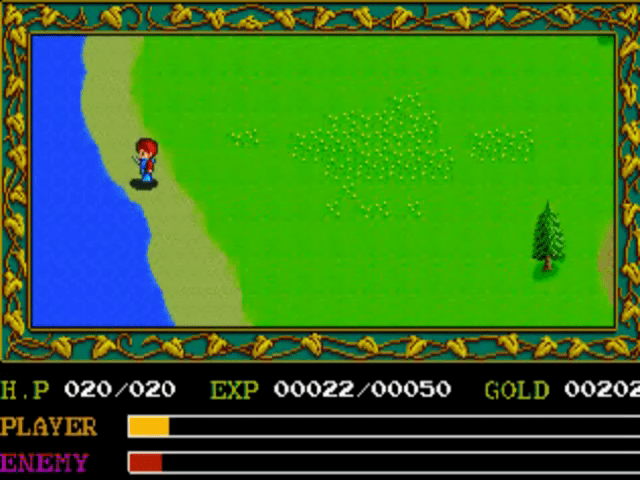
Initially developed for the PC-8801 by Masaya Hashimoto (director, programmer, designer) and Tomoyoshi Miyazaki (scenario writer), the game was soon ported to the X1, PC-9801, FM-7/FM-77, FM-77AV and MSX2 Japanese computer systems. Ancient Ys Vanished saw many subsequent releases, such as English-language versions for the Master System, MS-DOS, IIGS, and TurboGrafx-16, and enhanced remakes for the Saturn and Windows systems. The game was also released as part of a compilation, Ys I & II, for the PC Engine/TurboGrafx-CD in 1989, along with its 1988 sequel Ys II. It has also been released for the Nintendo DS.
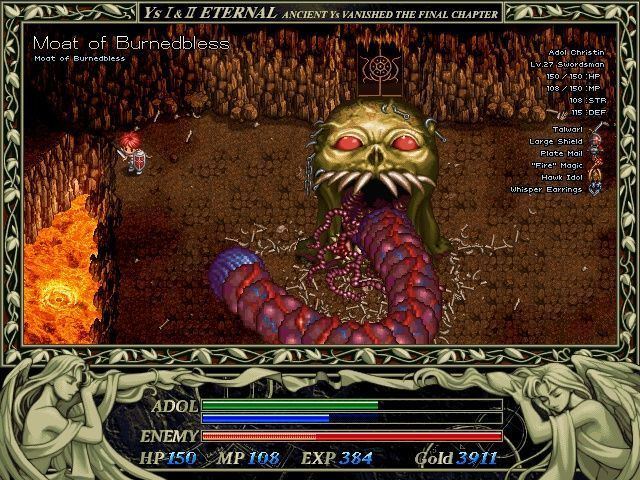
Ys i ancient ys vanished part 1 a new adventure
Plot
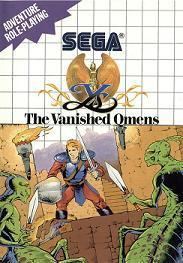
Ys was a precursor to RPGs that emphasize storytelling. The hero of Ys is an adventurous young swordsman named Adol Christin. As the story begins, he has just arrived at the Town of Minea, in the land of Esteria. He is called upon by Sara, a fortune teller, who tells him of a great evil that is sweeping the land.
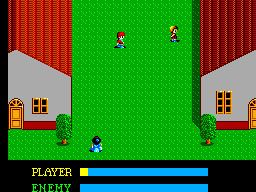
Adol is informed that he must seek out the six Books of Ys. These books contain the history of the ancient land of Ys, and will give him the knowledge he needs to defeat the evil forces. Sara gives Adol a crystal for identification and instructs him to find her aunt in Zepik Village, who holds the key to retrieving one of the Books. With that, his quest begins.
Gameplay
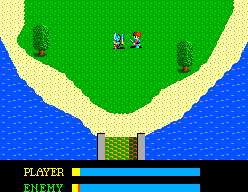
The player controls Adol on a game field viewed from a top-down perspective. As he travels on the main field and explores dungeons, he encounters numerous roaming enemies, which he must battle in order to progress.
Combat in Ys is rather different from other RPGs at the time, which either had turn-based battles or a manually activated sword. Ys instead features a battle system where fighters automatically attack when walking into their enemies off-center. When one fighter crashes into an enemy, damage could be sustained on both sides if both combatants are facing each other. Attacking straight on causes the attacker the most damage to himself, but clipping the edge of the defender causes the attacked fighter to take most or all of the damage. If one fighter crashes into an enemy's side or back, only the attacked fighter will sustain damage. This combat system was created with accessibility in mind. This 'bump attack' system has become one of the series' defining features. Falcom staff have compared this style of gameplay to the enjoyment of popping air bubble sheets, in the sense that it took the tedious task of level-grinding and turned it into something similar to a high-score-based arcade game. According to GamesTM and John Szczepaniak (of Retro Gamer and The Escapist), "Repetition of the act was pleasurable as you developed a psychological rhythm and, even in the event of backtracking, progress was always swift since the player never needed to stop moving."
Another feature that has been used in nearly every Ys title since the original is the recharging health mechanism, which had previously been used in the Dragon Slayer (to which Ys is the official successor) clone Hydlide series, although Hydlide itself borrowed the feature from the 1980 game Rogue (video game) in the first place. Recharging health has since become a common mechanism used in many video games today.
Version differences
Aside from graphical differences, the game layout remains essentially the same across the many ports of Ys; however, there are some versions where the details were changed. The Sega Master System version, for example, saw some of the game's dungeon areas flipped horizontally (including some other minor differences).
The most distinctive of the early ports was the Famicom edition, which was published by Victor Musical Industries. This version was a vast departure from the original, featuring entirely new layouts for the towns, field, and dungeons, replacement of a number of the original musical tracks, and a new final battle sequence.
The version developed for the MSX contained a handful of new musical tracks which replaced part of the original game's soundtrack. Some of these tracks, along with a number of unused tracks first composed for the original, were later incorporated into the soundtrack of Ys Eternal and Ys Complete.
The versions developed for the PC Engine CD-ROM², released as Ys I & II in 1989, and Sega Saturn included additional cutscenes, such as an opening detailing Adol's arrival in the town of Minea. The Microsoft Windows-based remakes, Ys Eternal and Ys Complete, expand further on this and many other story elements, through both cutscenes and additional gameplay.
The Sharp X68000 enhanced remake released in 1991 was notable for its early use of 3D pre-rendering for the boss sprites. However, this ended up creating what is considered "a bizarre contrast" with the game's mostly 2D graphics.
Music
Composed by Yuzo Koshiro along with Mieko Ishikawa, the soundtrack is notable for its rich melodies, in an age when video game music was beginning to progress from monotonous bleeps. The Ys soundtrack is considered to have some of the best video game music ever composed, and it is considered one of the finest and most influential role-playing video game scores of all time.
Several soundtrack albums dedicated to the music of Ys have been released by Falcom. This includes:
Reception
The Sega Master System version of Ys was reviewed in the March 1989 issue of Computer and Video Games. The magazine gave the game a score of 92%, stating that it has some of the best graphics on the system and that it "offers depth and playability" that "will keep you engrossed for weeks."
The Games Machine compared the game to The Legend of Zelda, stating that "in many respects, the character detail and all-round presentation make it the better game visually," and concludes that Ys is "one of the top-rank RPGs around," giving it a score of 90%. The game was later reviewed in 1991 in issue 172 of Dragon magazine by Hartley, Patricia, and Kirk Lesser in "The Role of Computers" column. The reviewers gave the game 5 out of 5 stars. Computer Gaming World in 1993 called the computer version of Ys "a fairly simple entry with a few puzzles to solve ... interesting mainly for seeing what the Japanese do in terms of lightweight CRPGs".
